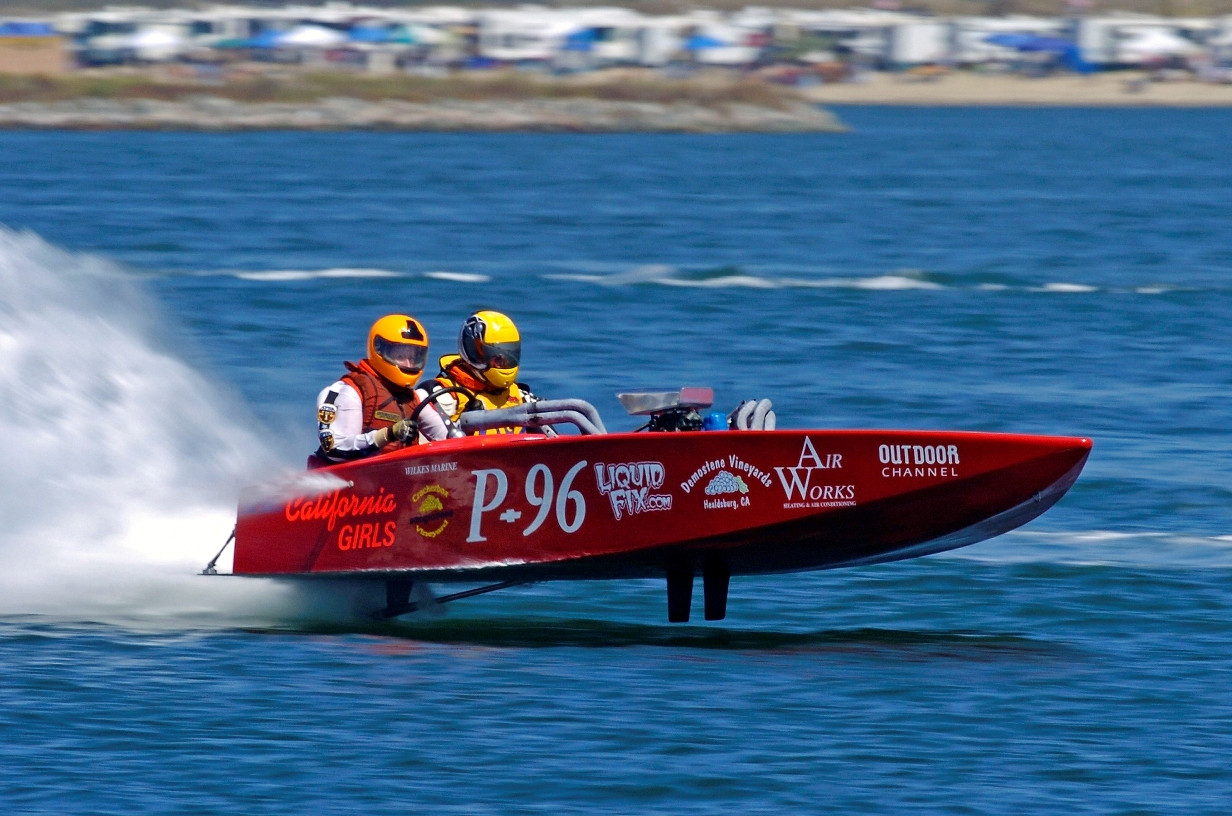I believe there is an important vocabulary issue here. As far as I understand, the word "wing" usually associated with "flying". From that perspective; birds have wings, aeroplanes have wings but not F1 cars or boats or anything that does not fly. In other words, wings are used to create a lift for flying objects in air. Boats are kept on water thanks to a lift from water not air, therefore they do not need wings for lift.
However on different vehicles wing-like structures exists to serve different purposes, mostly efficiency (low air friction), stability and control. Any vehicle that goes faster than certain speed can have wing-like structures, this includes ordinary and sports cars, F1 cars, racing boats etc. As mentioned in one the comments above to get any force from a wing-like structure in air, either the flow has to be fast (high speed) or the area of the wing-like structure has to be large (such as windmills). I believe, engineers make calculations for the compromise between the size of the structure and the gain and build wing-like structures on vehicles where necessary. These parts are not always called wings. See attached pictures.

 https://s-media-cache-ak0.pinimg.com/originals/83/4c/0e/834c0e487cd36d36ee816accadd0611f.jpg
https://s-media-cache-ak0.pinimg.com/originals/83/4c/0e/834c0e487cd36d36ee816accadd0611f.jpg

 https://i.ytimg.com/vi/4WM7dM3oyhc/maxresdefault.jpg
https://i.ytimg.com/vi/4WM7dM3oyhc/maxresdefault.jpg

 http://img.autobytel.com/car-reviews/autobytel/130984-10-cool-cars-with-wings/2016-Subaru-WRX-STI-rear-view.jpg
http://img.autobytel.com/car-reviews/autobytel/130984-10-cool-cars-with-wings/2016-Subaru-WRX-STI-rear-view.jpg

 http://www.apba.org/sites/all/files/images/classes/Inboard_Crackerbox_P-96.jpg
http://www.apba.org/sites/all/files/images/classes/Inboard_Crackerbox_P-96.jpg

 http://www.apba.org/sites/all/files/images/classes/SE_UnlimitedLights_PaulDroullard,%20UL-9.jpg
http://www.apba.org/sites/all/files/images/classes/SE_UnlimitedLights_PaulDroullard,%20UL-9.jpg

 http://www.firsttimemarinadelrey.com/images/under-a-sailing-yacht.jpg
http://www.firsttimemarinadelrey.com/images/under-a-sailing-yacht.jpg
